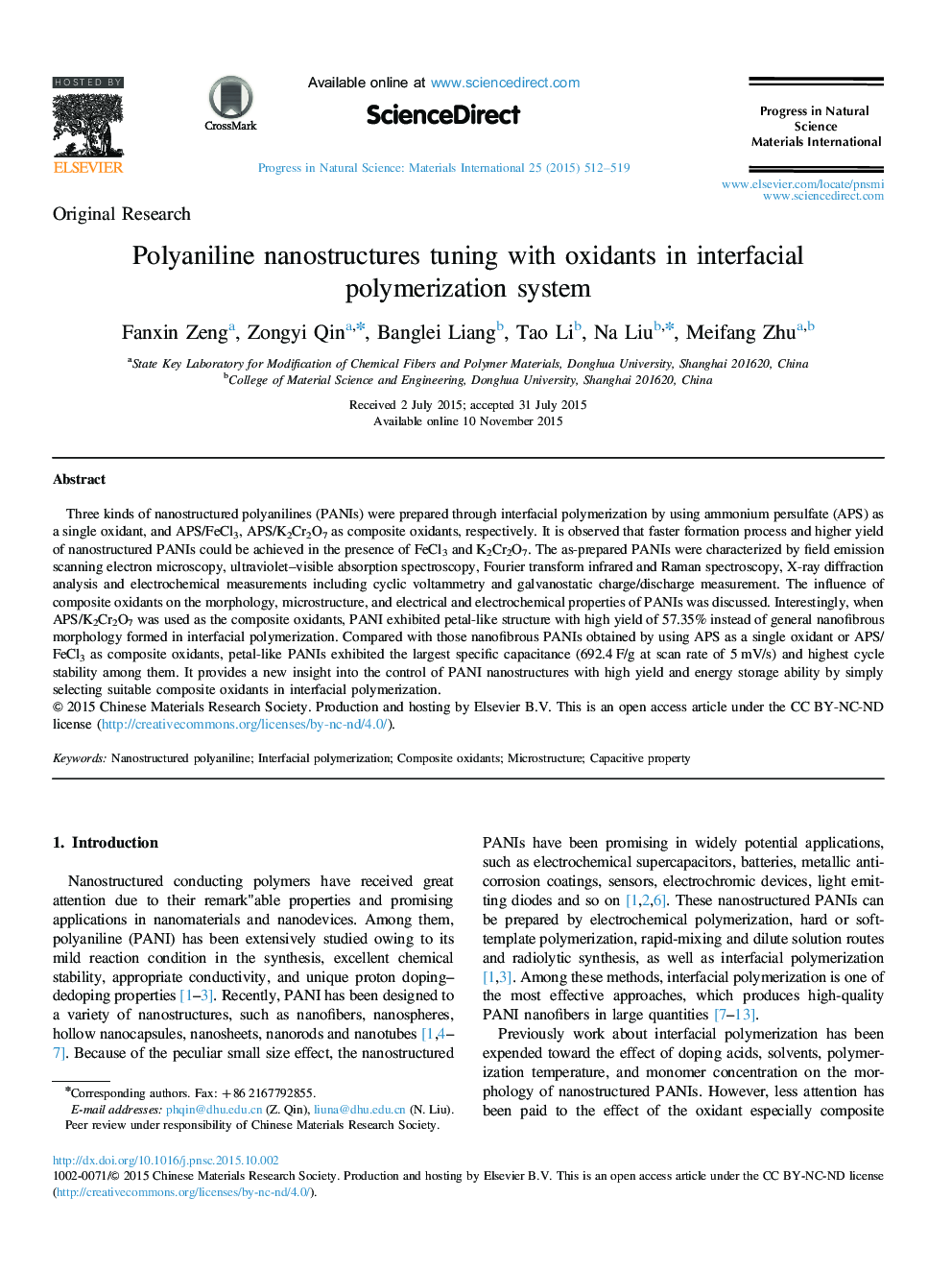| Article ID | Journal | Published Year | Pages | File Type |
|---|---|---|---|---|
| 1548051 | Progress in Natural Science: Materials International | 2015 | 8 Pages |
Three kinds of nanostructured polyanilines (PANIs) were prepared through interfacial polymerization by using ammonium persulfate (APS) as a single oxidant, and APS/FeCl3, APS/K2Cr2O7 as composite oxidants, respectively. It is observed that faster formation process and higher yield of nanostructured PANIs could be achieved in the presence of FeCl3 and K2Cr2O7. The as-prepared PANIs were characterized by field emission scanning electron microscopy, ultraviolet–visible absorption spectroscopy, Fourier transform infrared and Raman spectroscopy, X-ray diffraction analysis and electrochemical measurements including cyclic voltammetry and galvanostatic charge/discharge measurement. The influence of composite oxidants on the morphology, microstructure, and electrical and electrochemical properties of PANIs was discussed. Interestingly, when APS/K2Cr2O7 was used as the composite oxidants, PANI exhibited petal-like structure with high yield of 57.35% instead of general nanofibrous morphology formed in interfacial polymerization. Compared with those nanofibrous PANIs obtained by using APS as a single oxidant or APS/FeCl3 as composite oxidants, petal-like PANIs exhibited the largest specific capacitance (692.4 F/g at scan rate of 5 mV/s) and highest cycle stability among them. It provides a new insight into the control of PANI nanostructures with high yield and energy storage ability by simply selecting suitable composite oxidants in interfacial polymerization.
